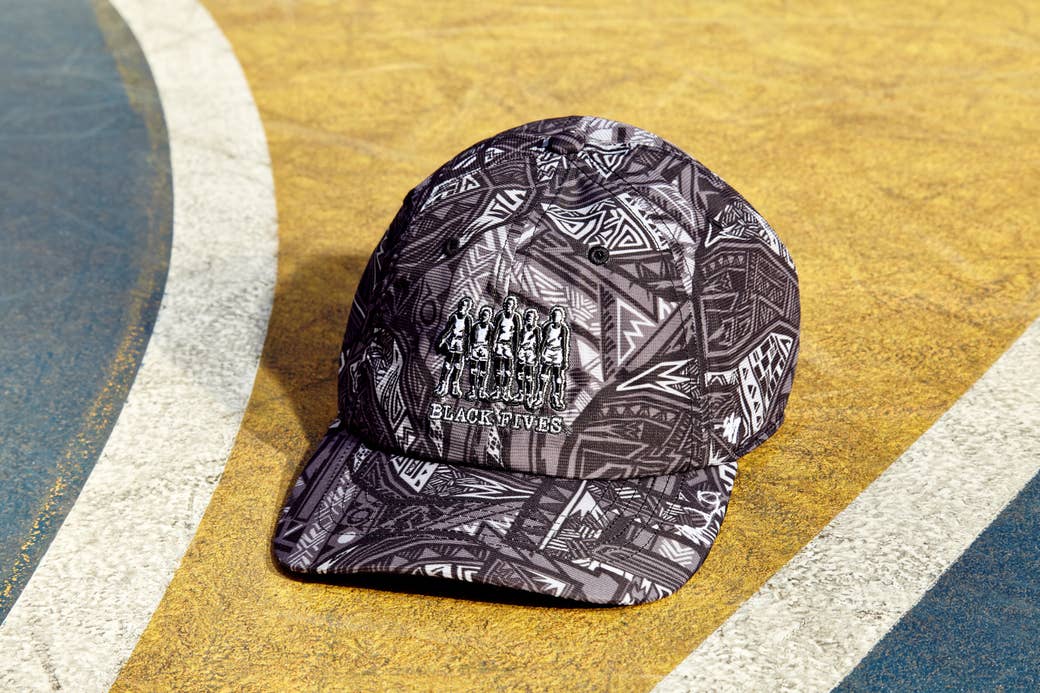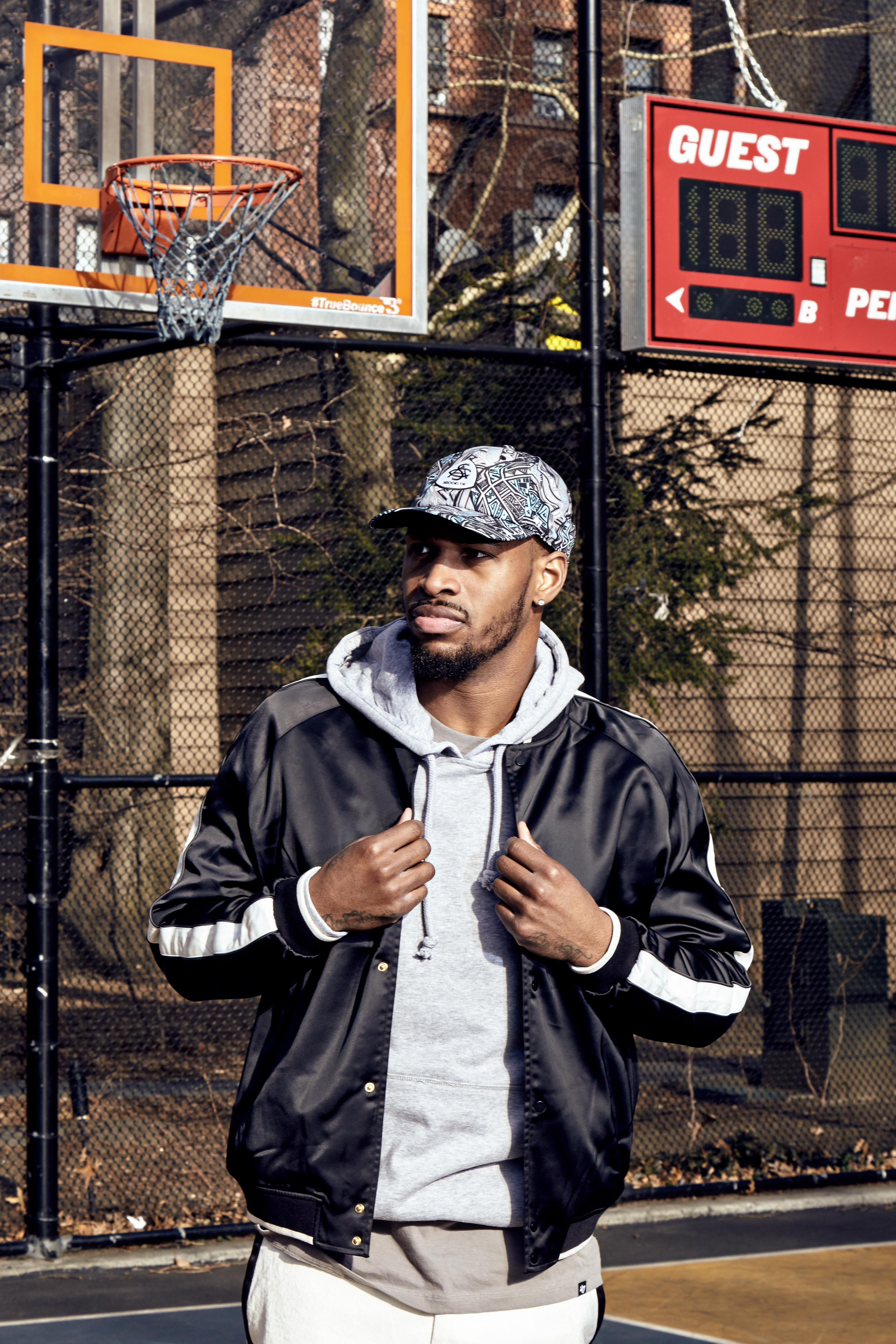
Black History Month has always highlighted exemplary figures in the African-American community. Celebrating icons, such as Dr. Martin Luther King Jr., Jackie Robinson, Booker T. Washington, and countless others, African Americans walk with a sense of pride honoring those heroes who paved the way for future generations. In the basketball world, the historic Black Fives, named for the five starting players, broke ground for our current day icons, jump-starting careers for African-American players yearning for an opportunity to showcase their athletic prowess in the NBA.
When basketball was first invented in 1891, it was a completely white game. It was invented by a future Presbyterian minister who had been assigned to teach a physical education class to a group of disorderly students at a YMCA in Springfield, Massachusetts. The game combined rugby with peach baskets and was played indoors before being picked up by colleges and an eventual all-white league.
In 1904, Edwin Bancroft Henderson, a black Washington, D.C., gym teacher brought the game from Harvard to black segregated schools. Eventually, African Americans forged their own teams and competed against one another at local YMCAs. Like most upstart sports, there was money but not much of it, and so players would often have to play multiple games a day at different locations just to make ends meet.
The Black Fives Foundation works to research, preserve, exhibit, and promote the pre-1950 history of African Americans in basketball to engage, teach, and inspire youth and others while honoring its pioneers and their descendants. Basketball, like American society, was racially segregated. Teams made up entirely of African American players were often known as “colored quints,” “Negro cagers,” or “black fives,” up until the NBA became integrated in 1950. The Black Fives Foundation began when founder and executive director Claude Johnson was working in licensing at the National Basketball Association. In 1996, they published a book called The Official NBA Encyclopedia and Johnson was troubled when he noticed that there were only three pages dedicated to pre-1950s African American basketball teams. Johnson knew their story was much bigger and richer, and sought to make sure their legacy wouldn’t be lost to the annals of time. Johnson made it his mission to have everyone remembered, from the players to those created the infrastructure that would make Black basketball sustainable. Johnson recalls how West Indian team owner and promoter Bob Douglas played an integral role in providing players with their first full-year contracts, which allowed them to stick with one team instead of bouncing around.
"Douglas realized to have a great team, you have to secure your players. It wasn't just that they were paid, it was also that they had full-year guaranteed contracts and that he secured their rights for the entire year so they couldn't play for another team,” Johnson explains.
Douglas’ idea was a gold mine. Instead of players traveling to various cities to play for the day for different teams, they now had the opportunity to receive a salary and play for one organization and thus, Douglas could stack his team, the New York Renaissance Big Five, with the most talented players.
Dozens of teams emerged in notable cities, including New York; Washington, D.C.; and Pittsburgh. “So, you had Brooklyn; several teams in Manhattan; several teams in New Jersey, like Newark and Orange; Pittsburgh; Washington, D.C.; Baltimore; Chicago; Philadelphia; Cleveland; and other parts of Ohio. It was localized. They didn’t have a lot of cities you would imagine today like L.A. and Atlanta. It hadn’t spread yet in terms of Black basketball,” Johnson relates.

The World Championship Brings Unity
Before long, teams such as the New York Renaissance, the Chicago-based Savoy Big Five, and the Philadelphia Panthers, proved they were formidable clubs that could compete on a larger level and the NBA took notice. By 1939, a tournament had been created to determine which team was the best regardless of race. “The Herald Tribune decided to run a tournament to settle things. That tournament was called the ‘World Championship of Professional Basketball.’ There were 10 years of these tournaments,” explains Johnson.
For the inaugural tournament in 1939, the New York Renaissance emerged victorious, and their tournament win helped the Black Fives explode nationally. In 1940, the Harlem Globetrotters walked away with a tournament win, elevating the stock of African American players exponentially. Fans reveled at the sheer thought of watching an all-Black team compete every year in the World Championship, especially when racial tensions were at an all-time high.
According to Johnson, “The New York Renaissance would travel to all-White towns, even during the Great Depression, even in the middle of Jim Crow, and they would get invited back.” Due to the overwhelming success surrounding the Black Fives, the NBA became an integrated league, allowing African American players to join, in 1950.
Keeping the Black Five’s Legacy Alive With '47

While none of the original Black Fives players are still alive, for Johnson, it is imperative that today’s youth know about their legacy. In hopes of spreading their story, Johnson teamed up with global sports lifestyle brand '47 to not only preserve the story of their illustrious era from 1904 to 1950, but also to educate younger generations who have fallen in love with the game of basketball.
“You hear so much about the Negro league in baseball, but you don’t [hear as much] about [that] story in basketball,” says Muideen Ogunmola, a sports illustrator, creator of BLOCKNATION, and headwear designer at '47. Ogunmola was instrumental in designing the Black Fives caps collaboration with '47. “I think it’ll open up a door for young kids to learn about the Black Fives,” Ogunmola says of the newly designed Black Fives caps. “If you really want people to pay attention to what’s happening, you just have to present it in a great light. You make it a part of their lifestyle.”
In 2015, '47 launched their first collection with the Black Fives, featuring the authentic identities of the original teams. The following year, '47 dropped a house collection, shifting their focus on the Black Fives Foundation mark and mantra: “Make History Now.” This year, while celebrating Black History Month, Claude and '47 reinterpreted their message to be more akin to a conversation with today’s youth and style trends. Incorporating Ogunmola’s signature artwork, often inspired by the NBA and early African arts, the caps are meant to catch the eye and elicit curiosity in the history of the Black Fives.
Sean Kilpatrick and Overcoming Adversity
'47 is dedicated to giving the Black Fives Foundation a platform today and keeping the story of the Black Fives alive. Along with '47, Brooklyn Nets guard Sean Kilpatrick is one current NBA player who is doing his part in opening doors for young black athletes coming of age. Just like the Black Fives inspired black players before him, Kilpatrick was influenced by the greats of the 90s, specifically a legendary crew from the Chicago Bulls, to achieve great things and participate in the NBA. "When I was [younger], I had the Michael Jordans and the Scottie Pippens to really sit there and look up to. Every kid growing up always wanted to be like him, to be like Mike. You always wanted to do something like Mike. And he was so happy to be in the NBA, and I said ‘that's exactly where I want to be.’"
The importance of role models like the Black Fives was never lost on Kilpatrick, who was also inspired by the strongest woman in his life. "My mom really did a great job of introducing me to the game and making sure that I was always active in sports," recalls Kilpatrick. He would spend countless hours in the gym cultivating his game. White Plains Senior High School in Westchester County, New York became his playground, where he torched hapless defenders for recreational purposes mere miles from where his predecessors had on the New York Renaissance.
After being passed over in the 2014 NBA Draft, Kilpatrick credits his mother for instilling in him the tenacity and strength to pursue the NBA regardless of what others thought. “For me, to see everyone in the room cry except for my mom, my mom was one of the strongest people that night. She just looked at me and said, ‘You've been counted out all your life. What's so new about this?’ That was something that stuck with me. It didn't really hit me until the next morning. I said from this day forward, I would continue to keep living as an underdog,” he says.

Be Like the Black Fives
Kilpatrick found the strength to persevere in his craft as a means to honor his family and his race. "Now a days, where we are in life—especially in society—the black male has to be on top of his game,” Kilpatrick maintains. “If I were to quit, I don't know how I would have been able to help my daughter do anything. I want to make sure she's seeing all the positive things, seeing what's going on, but also noticing and realizing that it took a lot of hard work to get where I am now and it's going to take a lot of hard work to get where she wants to go.”
The same way the Black Fives gave hope to kids in need of superheroes, Kilpatrick hopes his story will instill the same amount of optimism in the younger generations of today. Ogunmola also thinks that '47’s headwear collection will help keep the rich history of the Black Fives alive, as information is contagious. “If you present it well, people are going to do the research themselves,” Ogunmola maintains. “Everyone wants to be the first on it and then they want to teach someone else about it and so they’ll go back and [gather even more] information.”
In Feb. 2016, Kilpatrick received word that the Brooklyn Nets were interested in signing him to a 10-day contract and once he returned home, he made it his mission to stay there. During his first 10-day contract, he scored 19 points against the Minnesota Timberwolves. On his second 10-day, he scored 19 points twice, forcing Nets general manager Sean Marks to sign him to a multi-year contract. This year, Kilpatrick showcased his potential when he eviscerated the L.A. Clippers with 38 points and 14 rebounds—both career highs. For Kilpatrick, he finally found a home in the NBA, and it was where he first grew up, in New York. His underdog mentality and his affinity for role models is why Sean Kilpatrick appreciates this collaboration with '47 and the Black Fives.

For more information on the collaboration, visit 47brand.com. You can also shop The Black Fives Collection at Lids.

